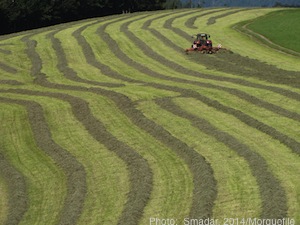Geo-Farming Part 2: Big Data
- At October 30, 2023
- By Mark Anton
- In Real Estate News
By Brandon Doyle
By now, most of us know that establishing a geo-farm can be an excellent way to gain listings over the long run. In March of this year, I posted an article titled “Geo-Farming to Build Your Business,” in which I describe strategies for identifying an area to farm and tactics for building your brand and reputation. While these methods are still tried-and-true, a new technology has emerged to make geo-farming more effective and easier than ever before.
Statically, home owners will move every seven years, on average. This is very easy to track using public tax records. This also allows us to also look up how much they paid, and mash that data up using an automated value system to get an idea of what the home might be worth now. It doesn’t make a lot of sense to market to someone who just bought their home, or someone who is completely upside down on their mortgage. We want to focus our marketing efforts on those who may be ready, willing, and able to sell.
Consider the reasons people decide to sell, whether it is a job promotion, marriage, new addition to the family, job relocation, graduation, divorce, or death – most real estate sales occur because of a major life change. If you were able to know when these events occur, in theory, you could get in front of the sellers at just the right time.
Enter the world of big data and predictive analytics. There are companies out there now that gather massive amounts of data about homes, and the people that live in those homes, and run algorithms to identify patterns and behaviors that could lead to a future listing. Sound crazy? I thought so too. After all, how can anyone know when a job loss is going to occur in the future that may require downsizing? Or, how would they know a family is growing and just ran out of bedroom space? While these companies can’t learn everything about a household by compiling data, they do know a lot. The information is out there – such as Internet searches, mailing lists, social media, and other public records – it’s just a matter of who is compiling it to make sense for us as real estate professionals.
There is one company in particular, SmartZip, which has molded its technology into a high-tech version of geo-farming. With their backbone in real estate data, they have accumulated so much information about neighborhoods and transactions that they can help real estate clients choose the most optimal area to farm based on expected turnover in the next year. You can actually look at neighborhoods side-by-side and decide which one to focus your time on. After you choose an area to farm, they call it their “SmartFarm,” you then get exclusive access to the home owners most likely to list in the next six to 12 months. The list is ranked, with the idea being that you should focus your marketing efforts on the top 20 percent.
They also offer a multichannel marketing approach, which includes post cards, hand written notes, and social media ads. The marketing is designed to drive traffic to a splash page where the home owners can get an estimated value, similar to Prime Seller Leads program.
Once you’ve identified that a home owner is curious about their value, it is your job to get in front of them. By now, you should have been marketing to them on a fairly regular basis. As with any marketing beyond your sphere group, it will take time for your campaign to be effective, and for you to earn the trust of your neighborhood. Once you’re recognized as the expert in the area, all your hard work will pay off.
Suffice to say, geo-farming just got way better.
Brandon Doyle, ABR, e-PRO, is a second-generation real estate pro with RE/MAX Results in the Twin Cities. Learn more about Brandon at www.doylerealestateteam.com.
Source - Realtor.org
You must be logged in to post a comment.

 As the premier real estate agents in Loudoun County, we're here to provide
you with all the resources and information you need to buy or sell real estate.
As the premier real estate agents in Loudoun County, we're here to provide
you with all the resources and information you need to buy or sell real estate.
